Disclosure: This article contains affiliate links. We may earn a commission from purchases at no extra cost to you, which helps our travel content.
Standing at the edge of the world's most haunting coastline, where the cold Atlantic crashes against one of Earth's oldest deserts, I found myself mesmerized by the brutal beauty of Namibia's Skeleton Coast. The shipwrecks half-buried in sand tell stories of maritime disaster, while the desert-adapted wildlife defies all logic of survival. As someone who's spent his life appreciating the marriage of natural materials and human ingenuity, I've never been more impressed than by the architectural marvels that are the luxury lodges dotting this remote wilderness. They've managed what seems impossible – creating pockets of absolute indulgence in one of the planet's most inhospitable environments. Join me as I take you through my week-long winter escape to Africa's ultimate luxury desert destination, where the craftsmanship of these remarkable structures rivals the breathtaking landscapes they inhabit.
The Journey to Nowhere: Accessing Namibia's Remote Coast
Let me be straight with you – getting to Namibia's Skeleton Coast isn't easy, and that's exactly why it remains one of Africa's last truly wild places. After landing in Windhoek, the real adventure begins with a small aircraft flight that offers your first glimpse of this otherworldly landscape.
As a mason who appreciates the challenge of difficult sites, I couldn't help but marvel at the logistical feat of building anything in this remote wilderness. Our Cessna Grand Caravan swooped low over endless ochre dunes, revealing the occasional shipwreck – eerie monuments to the coast's deadly reputation. The pilot, Johannes, pointed out a pod of seals along the shoreline, tiny dark specks against the white Atlantic foam.
'The lodges here,' he shouted over the engine noise, 'they had to bring every nail, every board, every worker by small plane.'
I'd researched extensively before this trip, equipping myself with the safari binoculars that proved invaluable throughout the journey. The clarity they provided for spotting distant oryx and desert elephants was remarkable – worth every penny for the wildlife enthusiast.
As we descended toward the private airstrip of our first lodge, I realized that no photograph could capture the vastness of this landscape. The lodge appeared as a mirage, a collection of structures that seemed to grow organically from the desert itself – exactly what I'd come to see as someone fascinated by how architecture can honor rather than conquer its environment.
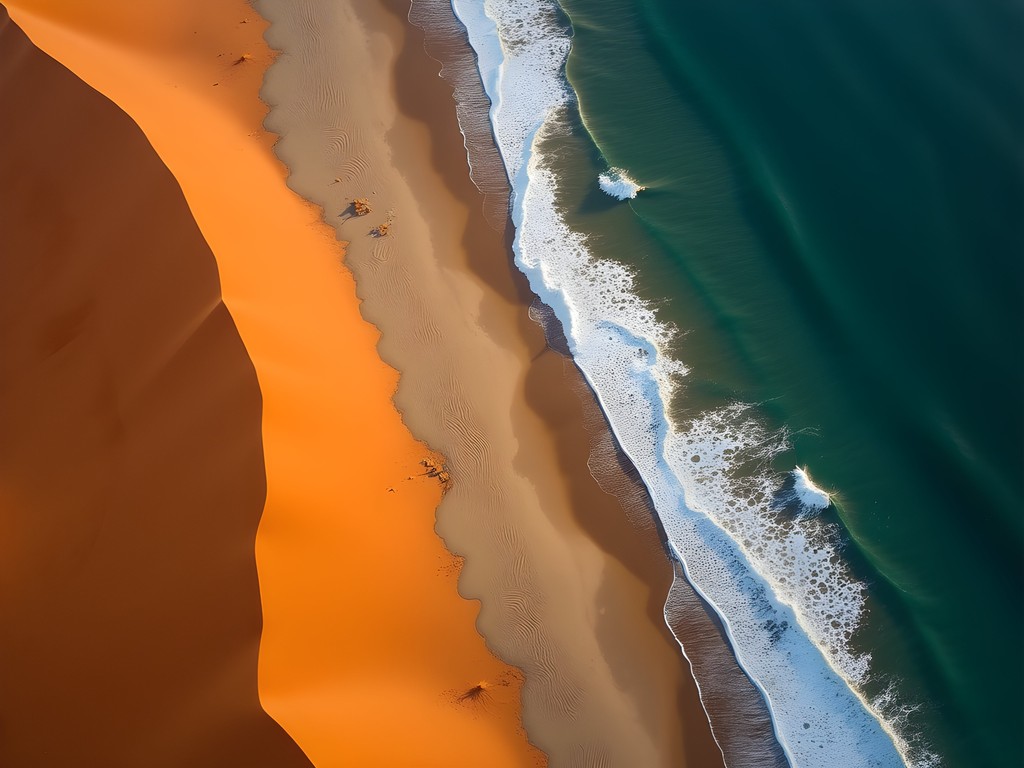
💡 Pro Tips
- Book your small aircraft transfers well in advance – seats are extremely limited
- Pack light but bring layers – desert temperatures fluctuate dramatically
- Invest in quality binoculars with at least 8x magnification for wildlife viewing
Shipwreck Lodge: Architectural Marvel in the Dunes
Of all the lodges I visited along the Skeleton Coast, none captured my professional admiration quite like Shipwreck Lodge. As someone who's spent his life working with stone and appreciating how buildings speak to their environment, I was stunned by the audacity of its design.
The lodge consists of ten wooden 'shipwreck' cabins, each an architectural homage to the vessels scattered along this treacherous shoreline. The structures rise from the dunes like the skeletal remains of boats, with wooden ribs and angular windows that frame the desert panorama. Yet inside, they offer a cocoon of luxury that defies their remote location.
My cabin featured walls of sustainable wood, curved to mimic a ship's hull, with exposed beams that reminded me of restoration projects I'd worked on in historic Glasgow buildings. The craftsmanship was impeccable – joinery that would make any tradesman proud, with not a visible fastener in sight.
'Each piece was hand-carried and assembled on site,' explained Tobias, the lodge manager. 'We couldn't exactly bring in cranes or heavy equipment.'
The interior design balanced luxury with sustainability – solar power, water conservation systems, and furniture crafted by local artisans. My bed faced floor-to-ceiling windows overlooking endless dunes, with a wood-burning stove for the surprisingly cold desert nights.
For photographers, I recommend bringing a portable tripod – the low light at dawn and dusk creates magical opportunities for capturing the interplay of shadows across the dunes, but requires stability for those long exposures. This compact option packs down smaller than a water bottle but provides rock-solid support for those unmissable shots.
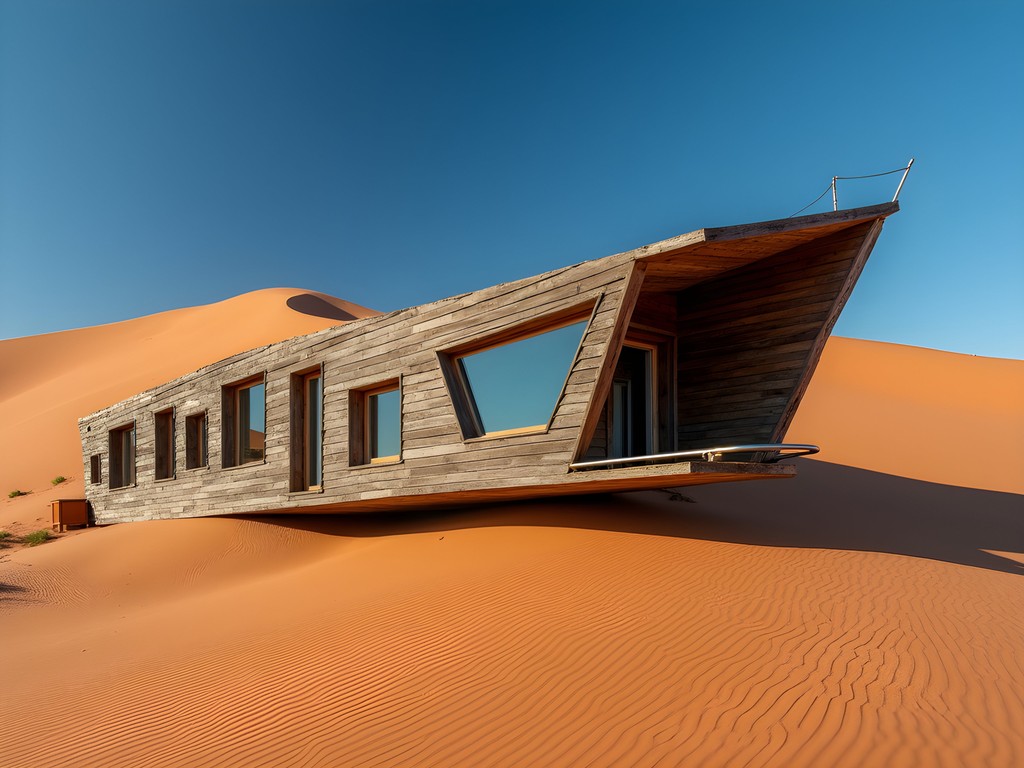
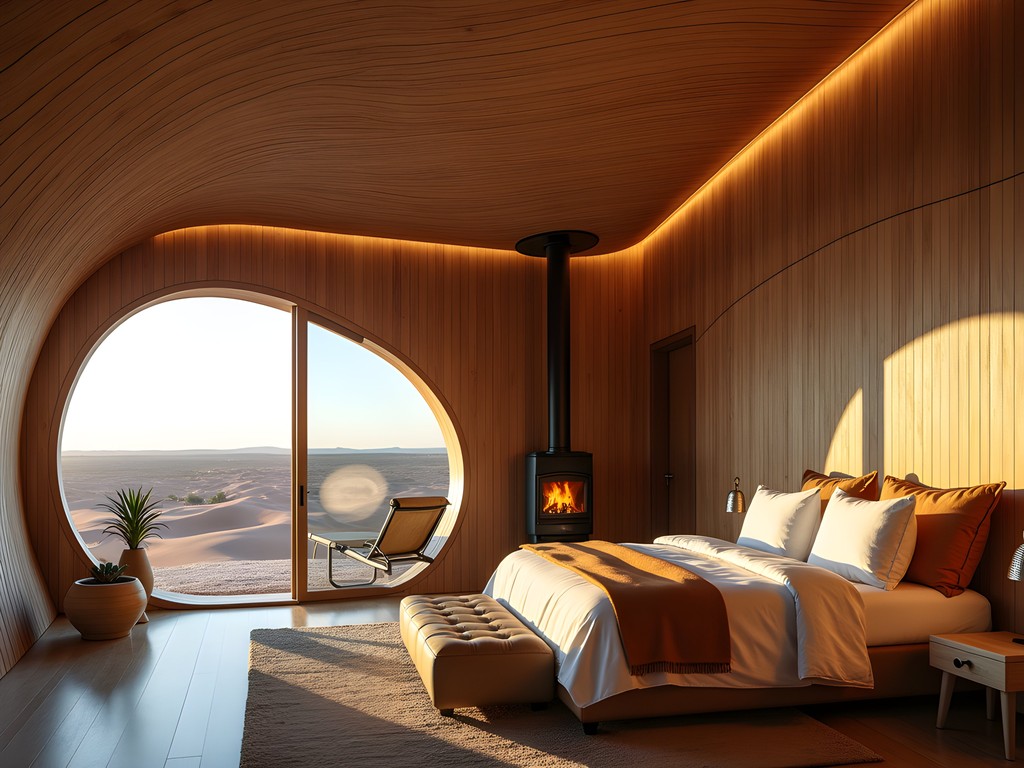
💡 Pro Tips
- Request Cabin 7 for the best unobstructed views of both dunes and ocean
- The lodge is completely solar-powered, so bring portable battery packs for electronics
- Pack a good book – there's no TV or WiFi, and that's part of the magic
Desert-Adapted Wildlife: The Miracle of Survival
When you think 'safari,' your mind likely conjures images of the Serengeti's lush plains. The Skeleton Coast offers something entirely different – a wildlife experience that showcases nature's remarkable adaptability in extreme conditions.
Our guide, Festus, a Himba man with generations of desert knowledge, took us tracking desert-adapted elephants along ancient riverbeds. These magnificent creatures have evolved smaller bodies than their savanna cousins and can go days without water. Watching a family group materialize from the shimmering heat waves, moving silently between dunes, was a moment that redefined my understanding of resilience.
'These elephants know where water flows underground,' Festus explained as we watched them dig wells with their trunks. 'They pass this knowledge through generations.'
The wildlife viewing here isn't about quantity but extraordinary specialization. We tracked desert lions – one of the rarest predator populations on Earth – following their prints across the sand until we spotted a lioness resting in the shade of a rocky outcrop, her coat almost perfectly matched to the terrain.
Oryx with their spectacular horns stood like sentinels atop dunes. Brown hyenas – seldom seen elsewhere in Africa – patrolled the shoreline for seal carcasses. Even the insects have adapted, with fog-harvesting beetles collecting moisture from the coastal mists.
For these early morning game drives, I was grateful for my insulated jacket – the temperature difference between pre-dawn and midday can be extreme, and this packable layer made the transition comfortable without taking up precious luggage space. In a place where temperatures can swing 30°F in hours, adaptability is everything – for wildlife and visitors alike.

💡 Pro Tips
- Always listen to your guide about safe distances from wildlife – desert animals require more space than those accustomed to vehicles
- The best wildlife viewing happens at dawn and dusk – adjust your sleep schedule accordingly
- Bring a journal to record sightings – you'll see species here that exist nowhere else on Earth
Hoanib Valley Camp: Sustainable Luxury Meets Conservation
After three unforgettable nights at Shipwreck Lodge, we flew south to Hoanib Valley Camp – an entirely different expression of desert luxury that immediately captured my craftsman's heart. Where Shipwreck Lodge celebrates the coast's maritime history, Hoanib embraces the colors and textures of the inland desert.
The camp sits in a wide valley flanked by mountains, with just six canvas-and-pole tents that seem to disappear into the landscape. What impressed me most was the construction – not a single concrete foundation disturbs the ancient valley floor. Instead, the entire camp is built on elevated platforms that can be completely removed without leaving a trace.
'When we eventually leave this place,' explained Emma, the camp manager, 'nature will reclaim it within months as if we were never here.'
The interiors showcase masterful use of local materials – handwoven baskets from nearby communities serve as light fixtures, stone collected from riverbeds forms bathroom counters, and furniture is crafted by Namibian artisans using sustainable wood. As someone who works with his hands, I found myself running my fingers along every surface, appreciating the honest expression of materials.
Beyond its architectural merits, Hoanib Valley Camp operates in partnership with the Giraffe Conservation Foundation. Guests participate in research activities, tracking the rare desert giraffes that somehow thrive in this harsh environment. We spent an afternoon recording giraffe patterns – each animal's markings are unique like fingerprints – for the research database.
The food deserves special mention – somehow, in this remote outpost, the chef creates gourmet meals using locally sourced ingredients. We dined under the stars at a long communal table, sharing stories with fascinating fellow travelers while jackals called in the distance.
For capturing the night skies here, which are among the darkest on Earth, I relied on my travel camera. The full-frame sensor handled the low light beautifully, capturing the Milky Way arching over our camp in breathtaking detail.
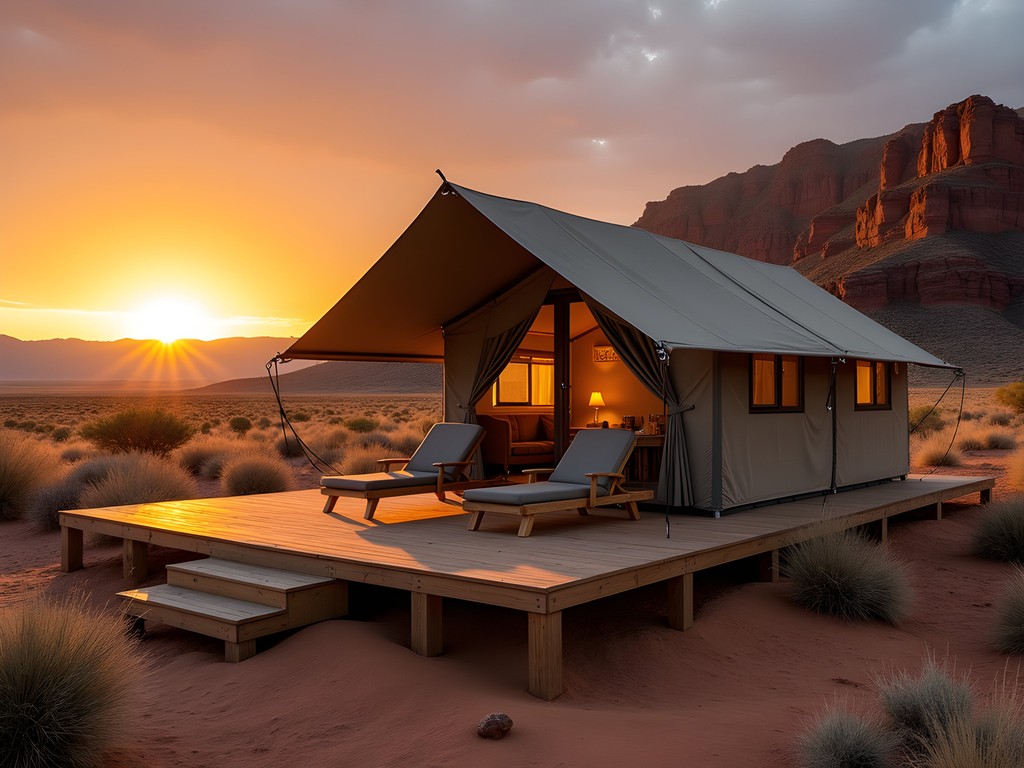
💡 Pro Tips
- Participate in the giraffe research – it adds purpose to your luxury experience
- Request a private dinner on your tent's deck at least once during your stay
- The camp offers complimentary laundry service – pack light and take advantage of it
Beyond Game Drives: Unique Skeleton Coast Experiences
While wildlife viewing forms the backbone of any safari experience, the Skeleton Coast offers unique activities that connect visitors to its distinctive history and geology.
One morning, we took a guided walk along the actual shoreline that gives the region its ominous name. The Atlantic fog was just lifting as we approached the massive skeleton of a whale that had washed ashore years ago. Beyond it lay the rusted remains of the Suiderkus, a fishing trawler that ran aground in 1977.
'The sailors survived,' our guide Benjamin explained, 'but the ship was claimed by the desert, like so many others.'
As someone fascinated by how materials weather and transform over time, I was captivated by the vessel's deterioration – how the salt air had corroded the metal, how sand had half-buried the hull, how nature was slowly reclaiming the man-made structure. It reminded me of restoration projects I'd worked on, where you can read a building's history in its decay.
Another highlight was visiting the semi-nomadic Himba people, who've adapted to desert life over centuries. Rather than a contrived cultural show, this was a genuine exchange arranged through the lodge's community partnerships. We learned about their remarkable building techniques – structures designed to be dismantled and moved with the seasons, using materials that can be harvested sustainably from the environment.
For geology enthusiasts, the Skeleton Coast offers treasures like the 'clay castles' – wind-eroded formations that resemble miniature fortresses rising from the plains. We hiked among these natural sculptures as Benjamin explained how they formed over millions of years.
One evening, we joined a stargazing session led by a local astronomer. The Skeleton Coast has some of the darkest skies on Earth, and viewing the Milky Way here – a silver river across the absolute blackness – was a humbling experience. For this activity, I was glad I'd packed my headlamp with its red light mode that preserved my night vision while allowing me to navigate safely back to the lodge.
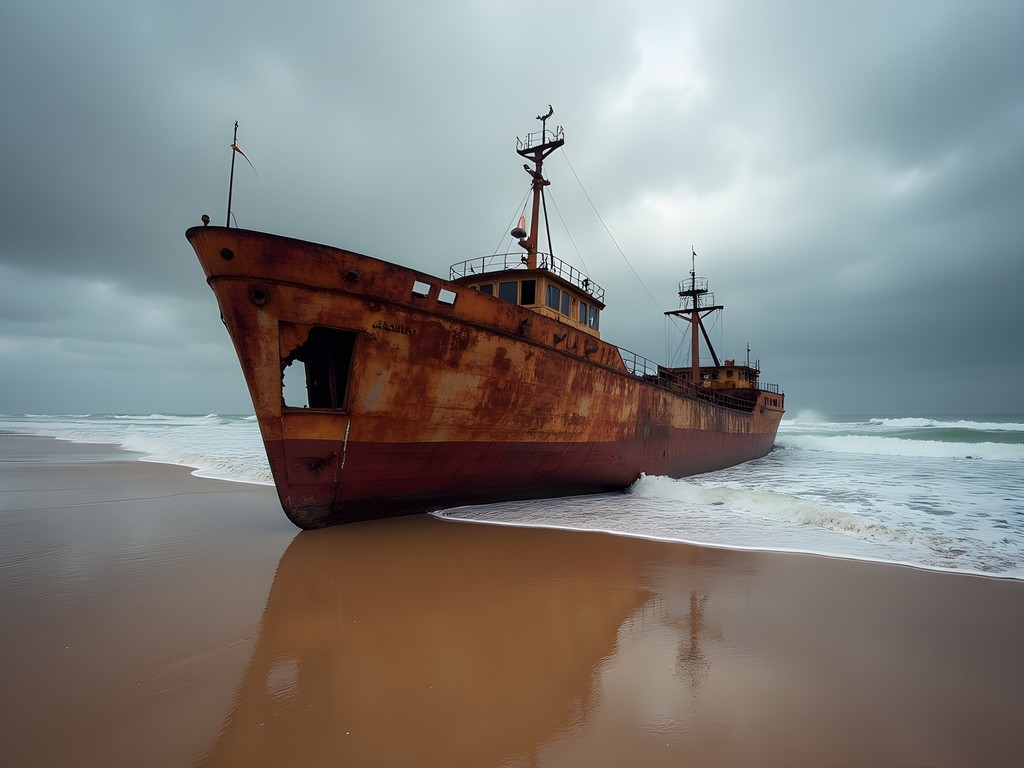
💡 Pro Tips
- Request the shipwreck excursion in advance – it requires special permits and planning
- Bring proper walking shoes for shore excursions – the terrain is rough and strewn with sharp shells
- Learn a few words in Otjihimba before visiting Himba communities – simple greetings go a long way
Final Thoughts
As our small plane lifted off from the desert airstrip on our final morning, banking over the endless dunes before heading east toward civilization, I found myself already planning my return. The Skeleton Coast offers a luxury experience unlike any other – not defined by gold fixtures or marble bathrooms, but by the privilege of absolute solitude in one of Earth's last truly wild places. For someone who appreciates craftsmanship, the ingenuity required to create comfort in such an environment is nothing short of miraculous. The lodges here represent the finest marriage of architecture and landscape I've ever encountered, rivaled only by the resilience of the wildlife and people who've called this harsh land home for generations. If you're seeking not just luxury but perspective – a reminder of your small place in something ancient and vast – Namibia's haunting coast delivers in ways no other destination can. Just come prepared for the desert to leave its mark on your soul, long after the sand has been shaken from your boots.
✨ Key Takeaways
- The journey to Namibia's remote lodges is part of the experience – embrace the small aircraft flights and their spectacular views
- The architecture of Skeleton Coast lodges represents some of Africa's most innovative sustainable design
- Winter (June-August) offers the best wildlife viewing conditions with comfortable daytime temperatures
- Pack for extreme temperature fluctuations – layers are essential even in luxury accommodations
📋 Practical Information
Best Time to Visit
June through August (Namibian winter)
Budget Estimate
$1,000-1,500 per person per night all-inclusive
Recommended Duration
7-10 days
Difficulty Level
Moderate
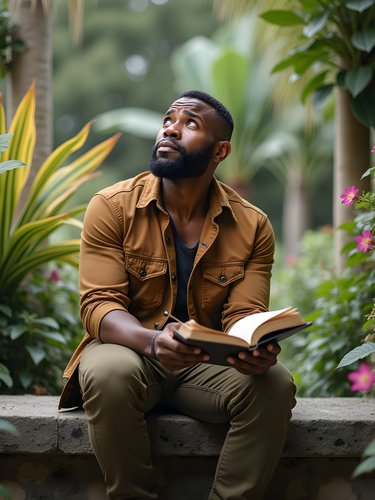
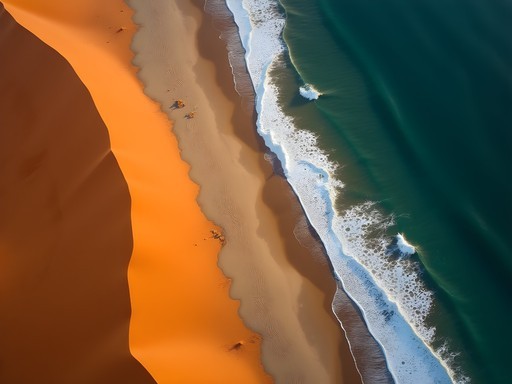

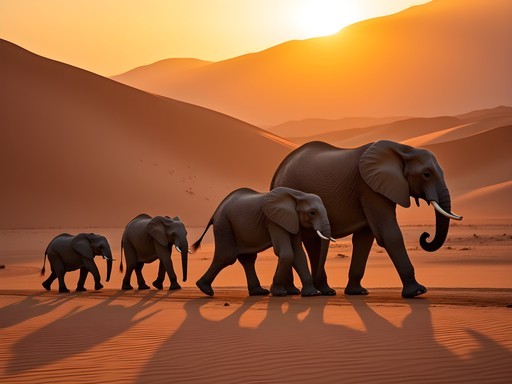
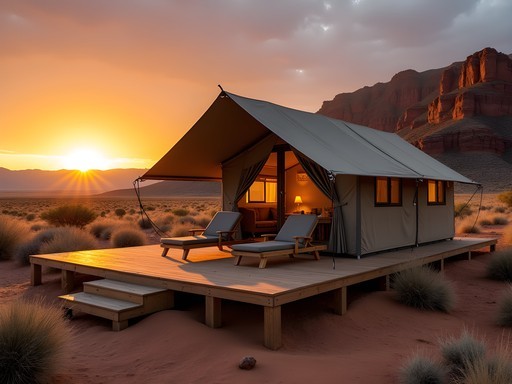



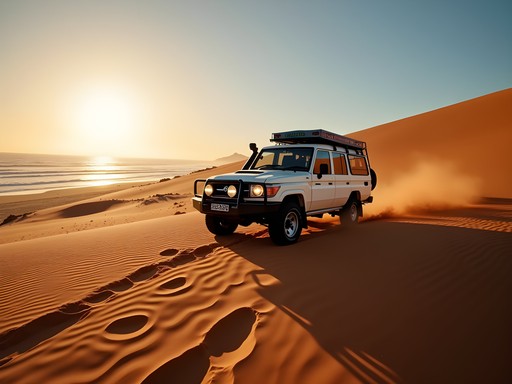
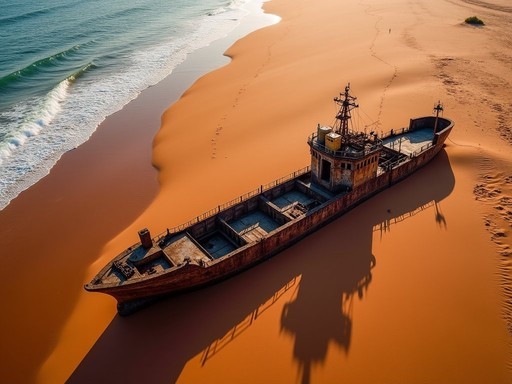
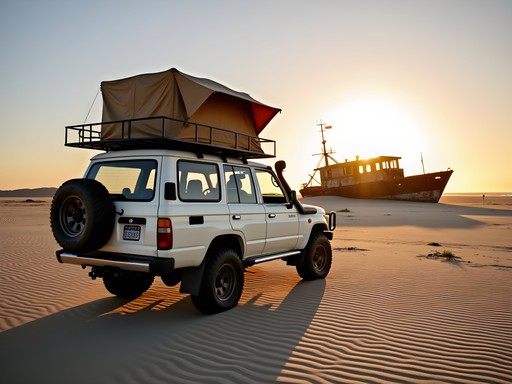

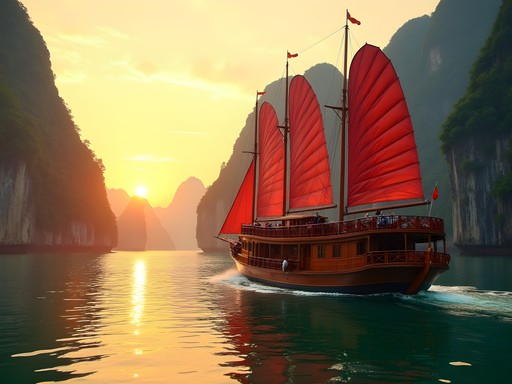



Comments
journeyking
Just booked my trip to Namibia for next spring and now I HAVE to figure out how to add this to my itinerary! The Hoanib Valley Camp looks incredible. Any tips on what to pack for the dramatic temperature changes? So excited!
Reese Roberts
Congratulations on booking your trip! Definitely pack layers - mornings and evenings can be surprisingly chilly, while midday heats up significantly. A good windbreaker is essential near the coast, and don't forget high SPF sunscreen and a wide-brimmed hat. The desert sun is intense! The lodges provide pretty much everything else you'll need.
moonhero
Stunning post! What's the best time of year to visit? I've heard the fog can be intense at certain times.
photobuddy
Not the author but I went in May last year and it was perfect. Clear skies most days with just enough morning fog to make those shipwrecks look extra eerie!
moonhero
Thanks for the tip! May might work well for our schedule too. Did you find the flight transfers smooth? A bit nervous about the small planes.
photobuddy
The small planes are actually amazing - best views you'll ever get! Just pack light, they're strict about luggage weight.
Sophia Gomez
Reese, your description of the Skeleton Coast took me right back to my visit last year! That haunting beauty is impossible to capture in words, but you've done it justice. The desert-adapted wildlife section was spot on - watching those elephants navigate the dunes was one of the most surreal experiences of my life. We stayed at Hoanib Valley Camp and I can confirm their conservation work is incredible. The trackers taught us so much about desert lion preservation. One tip for anyone planning a visit: pack layers! The temperature swing from day to night is extreme, and I was grateful for my merino base layers during those chilly desert evenings. Did you get to see any of the desert lions during your stay?
moonhero
I've been wondering about the wildlife viewing. Are sightings pretty reliable or is it hit or miss? Planning for next year and managing expectations!
Sophia Gomez
It's definitely not like the Serengeti where animals are everywhere, but that makes each sighting more special! Our guides were amazing at tracking. We saw elephants, giraffes, oryx, and even a brown hyena. Lion sightings are rarer but possible. The real magic is seeing how these animals have adapted to such an extreme environment.
dreamgal
How many days would you recommend staying to really experience the area properly?
Savannah Torres
We did 3 nights at Shipwreck and 2 at Hoanib Valley Camp and it felt perfect. Gives you enough time for coastal exploration, dune activities, and wildlife tracking without rushing.
photobuddy
Those lodge designs are incredible! Like something from another planet against those dunes.
Sophia Gomez
Right? Shipwreck Lodge looks like it was designed by Salvador Dalí! Architectural genius to blend with that haunting coastline.
photobuddy
Exactly! I'm saving up for this trip now. Did you find the remoteness worth the splurge, Sophia?
Oliver Duncan
What a fascinating contrast to my budget backpacking experience along Namibia's coast last year! While I couldn't afford these incredible lodges, I did camp near the southern edges of the Skeleton Coast and was equally mesmerized by those haunting landscapes. For those inspired by Reese's post but working with tighter budgets: consider the self-drive option through the more accessible southern section with camping gear. You'll miss some exclusive wildlife sightings, but the shipwrecks and dune landscapes are still accessible. The night skies alone are worth the journey! Reese, did you experience any of the famous fog that gives this coast its eerie reputation? Some of my most memorable photos came from those misty mornings.
Reese Roberts
Oliver, thanks for adding this perspective! We absolutely experienced the fog - it rolled in every morning like clockwork, creating this otherworldly atmosphere. Your budget approach sounds fantastic too. This region has so much to offer regardless of how you experience it.
blueexplorer
Those shipwreck cabins are wild! Great photos!
moonfan
Beautiful write-up! I've been looking at Namibia for our anniversary next year. Would you mind sharing a rough estimate of what this kind of experience costs? And is it worth the splurge compared to other African safari options?
Dylan Turner
Not the author, but having done both this and more traditional safaris, I can tell you these lodges run $800-1500 per person per night, all-inclusive. It's definitely a premium experience, but it's incomparable to anything else. The isolation and landscapes are worth every penny for a special occasion. I'd recommend this guide for planning - it has detailed info on the different regions and what makes each unique.
moonfan
Thanks Dylan! That's actually less than I expected for something this remote. Will check out that guide!
wandervibes
OMG those lodges look INCREDIBLE!! 😍 I'm obsessed with those shipwreck-inspired cabins! Adding this to my dream destinations right now! Did you see any of those desert elephants? The photos are absolutely stunning!
Reese Roberts
Yes! We were incredibly fortunate to spot a small herd of desert-adapted elephants on our second day. The guides explained how they've evolved to survive on much less water than typical elephants. Truly remarkable creatures!
Dylan Turner
Excellent coverage of what is truly one of Africa's most exclusive destinations. I visited the Skeleton Coast last year and was equally impressed by Shipwreck Lodge's architectural brilliance - those cabin designs perfectly capture the essence of the coastal wrecks while providing surprising comfort. One aspect I'd add is the remarkable stargazing opportunities here. The combination of zero light pollution and desert air clarity creates astronomical viewing that rivals anywhere on earth. Did you get a chance to experience their night drives? The nocturnal desert adaptations are fascinating to observe. The price point is steep, certainly, but the conservation work these lodges support makes it somewhat more justifiable.
Venture X
Premium card with 2X miles, $300 travel credit, Priority Pass